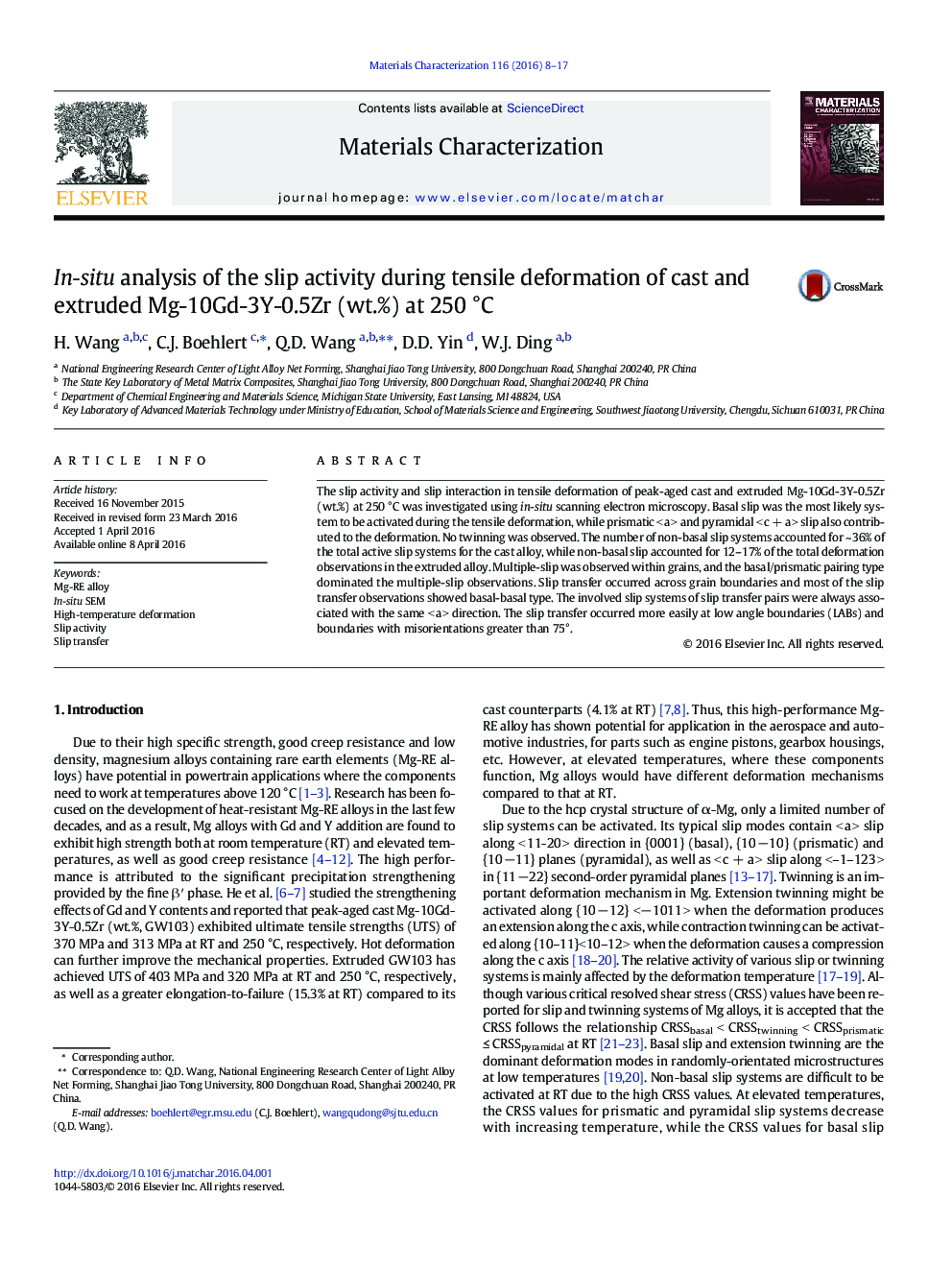| Article ID | Journal | Published Year | Pages | File Type |
|---|---|---|---|---|
| 1570718 | Materials Characterization | 2016 | 10 Pages |
•Slip deformation of a Mg-RE alloy at 250 °C was investigated using in-situ SEM.•The extruded-T5 GW103 alloy did not exhibit a high anisotropic behavior.•Multiple-slip was observed within grains, and basal/prismatic type dominated.•Slip transfer occurred and most of the observations showed basal-basal type.•Slip transfer occurred more easily at LABs and boundaries with misorientations > 75°.
The slip activity and slip interaction in tensile deformation of peak-aged cast and extruded Mg-10Gd-3Y-0.5Zr (wt.%) at 250 °C was investigated using in-situ scanning electron microscopy. Basal slip was the most likely system to be activated during the tensile deformation, while prismatic < a > and pyramidal < c + a > slip also contributed to the deformation. No twinning was observed. The number of non-basal slip systems accounted for ~ 36% of the total active slip systems for the cast alloy, while non-basal slip accounted for 12–17% of the total deformation observations in the extruded alloy. Multiple-slip was observed within grains, and the basal/prismatic pairing type dominated the multiple-slip observations. Slip transfer occurred across grain boundaries and most of the slip transfer observations showed basal-basal type. The involved slip systems of slip transfer pairs were always associated with the same < a > direction. The slip transfer occurred more easily at low angle boundaries (LABs) and boundaries with misorientations greater than 75°.
